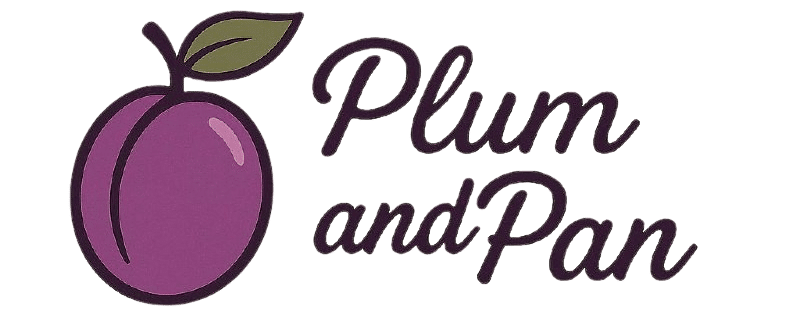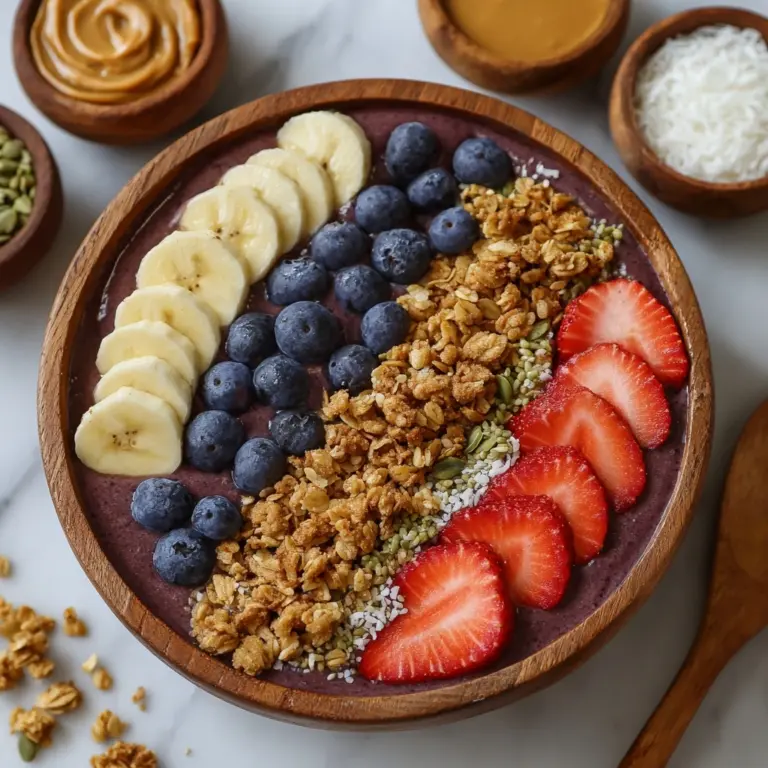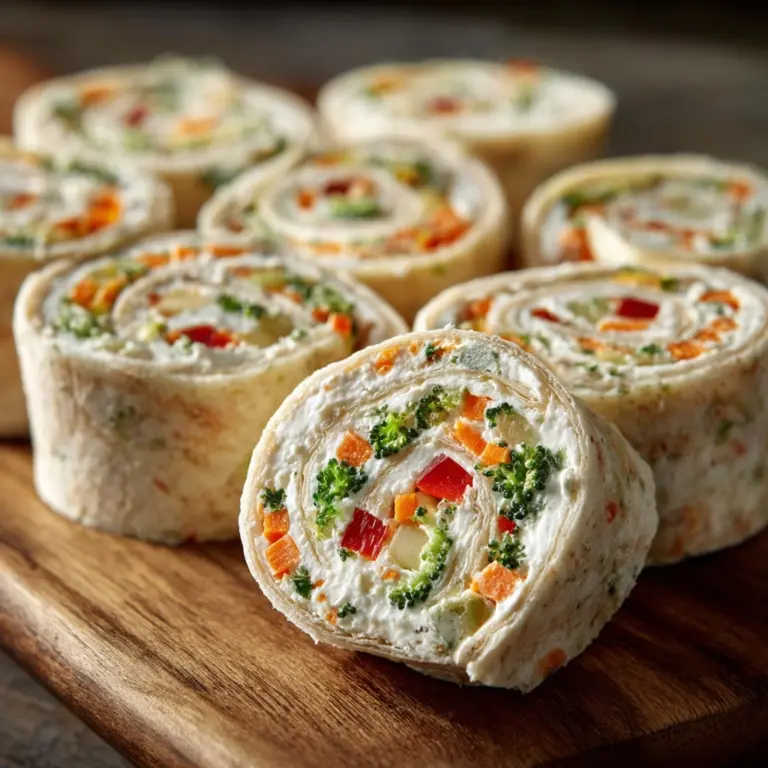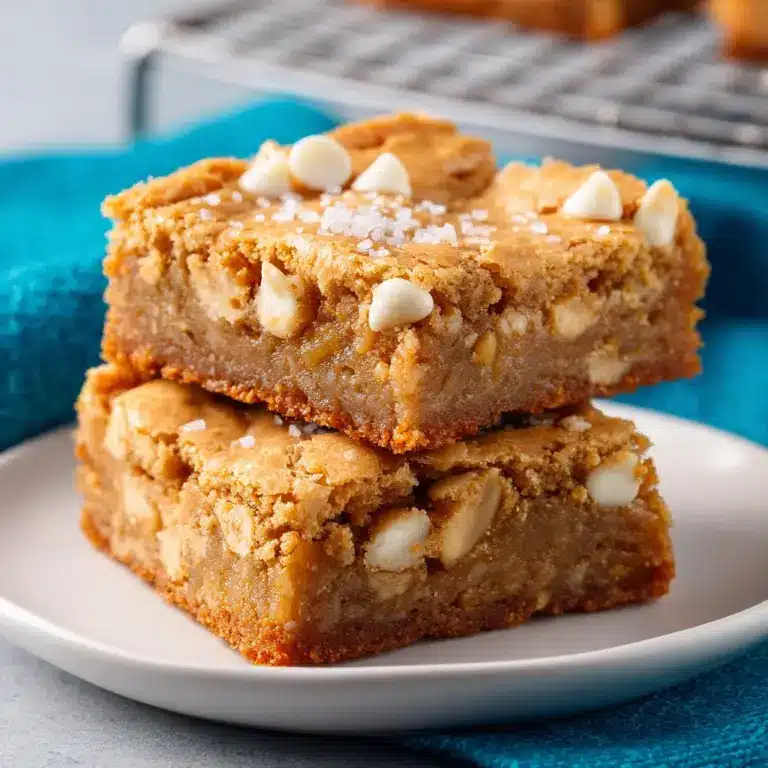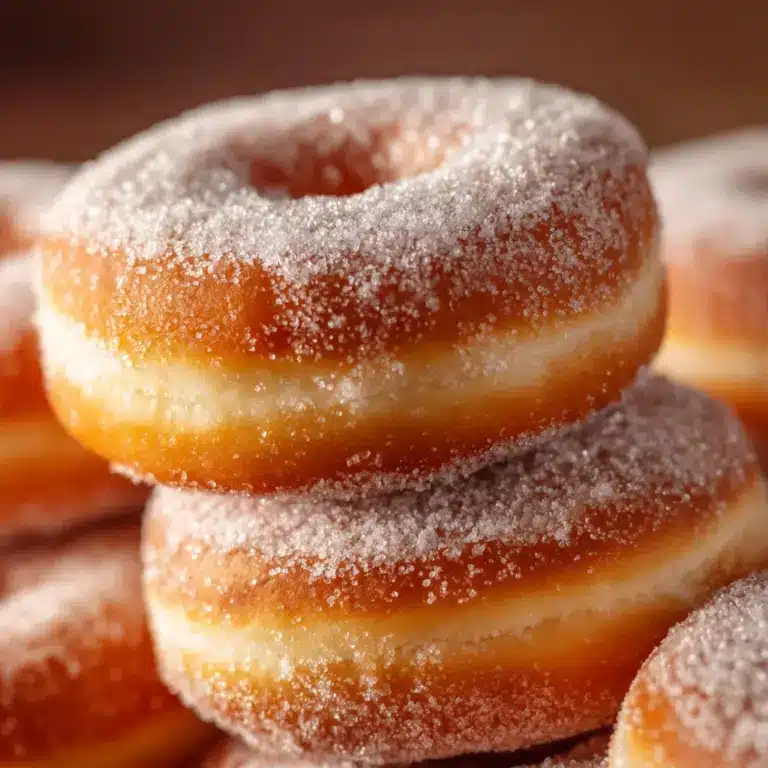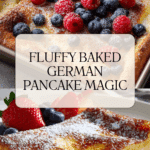Baked German Pancake Recipe
There’s something truly magical about pulling a Baked German Pancake from the oven: its spectacular, billowy edges and custardy center promise both drama and comfort in every bite. Whether you’ve tried one at a brunch spot or are just discovering its wonders, this simple dish turns basic pantry staples into an unforgettable breakfast or brunch. Its flavor is a lovely canvas for sweet or savory toppings, and I promise, the process is as easy as can be! If you’re looking to impress with minimal effort, this Baked German Pancake will quickly become one of your go-to recipes.
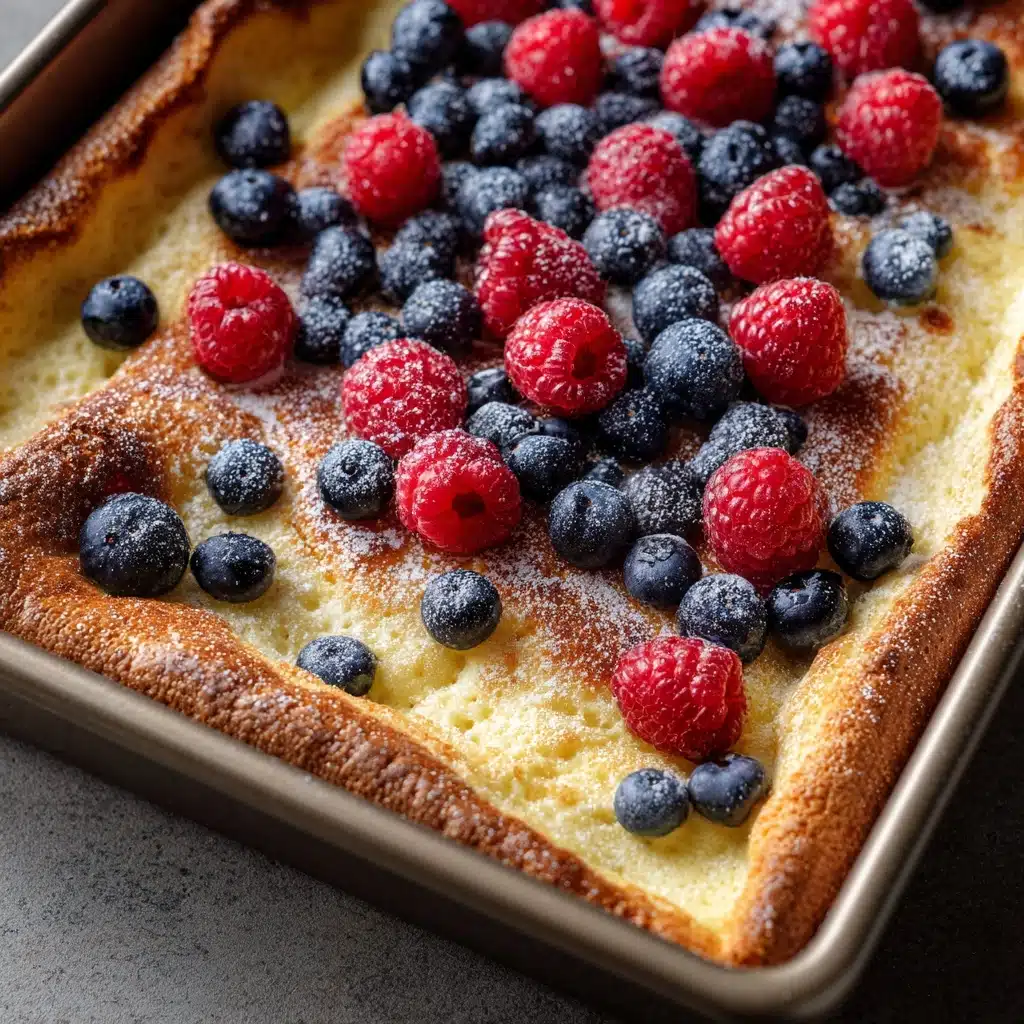
Ingredients You’ll Need
You might be surprised how a handful of everyday ingredients transform into something so eye-catching and delicious. Each one plays its part, delivering that signature rise, golden color, and irresistible flavor.
- Eggs: The main structure builders; they give your Baked German Pancake its impressive puff and soft, custardy middle.
- Milk: Adds moisture and helps create that tender, almost creamy texture.
- All-purpose flour: Provides just the right amount of body and chew without weighing things down.
- Salt: Rounds out all the flavors and ensures the pancake isn’t bland.
- Vanilla extract: Gives a hint of warmth and sweetness to make the flavors sing.
- Unsalted butter: Coats the pan and infuses the pancake with a rich, golden flavor while keeping it from sticking.
How to Make Baked German Pancake
Step 1: Preheat and Prepare the Pan
Begin by setting your oven to 425ºF (220ºC). As it heats up, drop your unsalted butter right into a 9×13-inch baking pan and slide the pan into the oven. Let the butter fully melt—this step gives the Baked German Pancake its irresistible crispy, buttery edges, so don’t skip it!
Step 2: Blend the Batter
In the meantime, gather your eggs, milk, flour, salt, and vanilla extract. Add them all to a blender and pulse until the mixture is truly smooth with no streaks of flour left. Blending thoroughly results in the pancake’s signature lightness and uniform texture, so take a moment here and get it really combined.
Step 3: Pour and Bake
Once your butter is melted and bubbling, carefully (the pan is super hot!) pour the batter right into the center of the pan, letting it spread out over the butter. Return the pan to your preheated oven and bake for 22–27 minutes. Watch as the pancake puffs and turns gloriously golden at the edges—the drama is half the fun! When the edges are high and beautifully browned, it’s ready.
Step 4: Serve and Enjoy
Remove the Baked German Pancake from the oven and, while it’s still hot, shower it generously with powdered sugar, drizzle it with maple syrup, and add a pat of butter or your favorite toppings. Dig in while everything’s warm and fluffy!
How to Serve Baked German Pancake
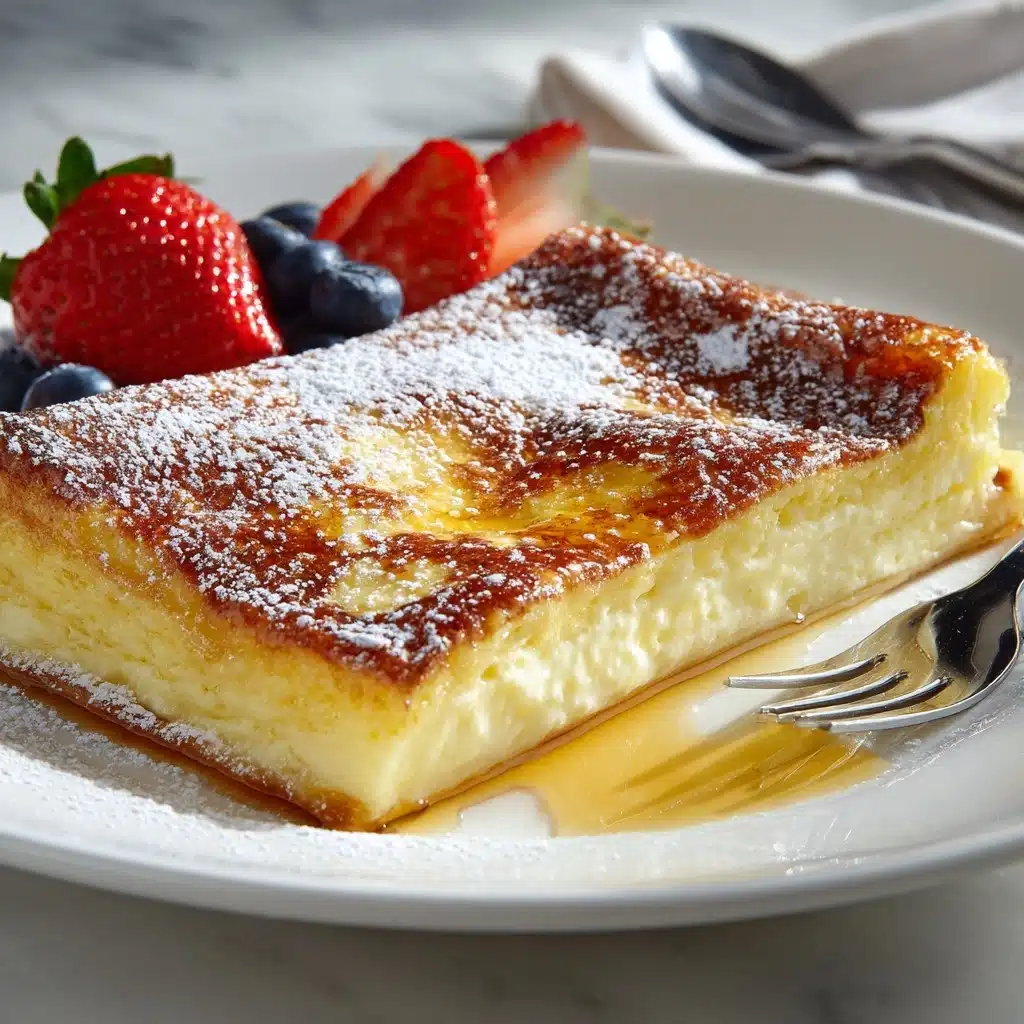
Garnishes
A dusting of powdered sugar gives an irresistible snowy finish, while a squeeze of fresh lemon brings out the pancake’s custardy flavor in the most wonderful way. Top with berries for color and freshness, or add warm apple slices and cinnamon if you’re feeling cozy. Even a simple drizzle of honey or a spoonful of whipped cream is divine on a freshly baked Baked German Pancake.
Side Dishes
To round out your breakfast or brunch, serve your Baked German Pancake with crispy bacon, breakfast sausages, or a bowl of mixed fruit. A cup of strong coffee or a frothy latte is the perfect sip alongside, and if you have a crowd, a fruit salad or yogurt bar will keep everyone happy.
Creative Ways to Present
If you want to impress, bring the entire pan to the table and serve straight from the oven—the dramatic puff always gets some oohs and ahhs! Or, pre-slice and plate with colorful toppings arranged in little bowls alongside so guests can personalize their own piece. For a twist, cut the pancake into squares and skewer with fruit for pancake “kabobs” at a brunch buffet.
Make Ahead and Storage
Storing Leftovers
If you happen to have extras, let your Baked German Pancake cool completely, then store slices in an airtight container in the fridge. They’ll stay fresh for up to three days, so you can easily enjoy a spontaneous sweet treat or quick breakfast.
Freezing
To freeze, arrange cooled pieces in a single layer on a baking sheet until solid, then transfer to a zip-top freezer bag. They’ll freeze well for up to two months, making it easy to grab a piece whenever a craving hits. Be sure to separate layers with parchment paper to keep them from sticking.
Reheating
To bring leftovers back to life, set your oven to 350ºF (175ºC) and heat slices on a baking sheet for about 10 minutes, just until warmed through. For a speedier fix, a few seconds in the microwave will do, but the oven or toaster oven gives the best texture, reviving a bit of that beloved crispiness.
FAQs
Can I make a Baked German Pancake without a blender?
Absolutely! You can vigorously whisk all the wet ingredients together, then sift in the flour and whisk until smooth. Just be sure the batter is completely lump-free for the best rise and texture.
Why did my Baked German Pancake not puff up?
Most often, this happens if the pan or butter wasn’t hot enough when adding the batter, or if the batter sat too long before baking. For the biggest, most dramatic puff, add the batter right away to a sizzling pan and get it in the oven quickly.
What toppings work best for Baked German Pancake?
Classic choices include powdered sugar, fresh lemon juice, berries, or maple syrup. You can also try sautéed apples, caramelized bananas, or even a dollop of Greek yogurt and honey for a lovely twist.
Can I make this recipe dairy free?
Yes, you can substitute plant-based milk (like almond or oat) and use a dairy-free butter alternative. These swaps work well, though the flavor and rise may differ slightly, but you’ll still get a delightful pancake.
Is a Baked German Pancake the same as a Dutch baby?
They’re one and the same! “Dutch baby” is the Americanized name for this oven-puffed delight—the technique and ingredients are identical, so feel free to call it whichever you like.
Final Thoughts
If you’re searching for a show-stopping yet delightfully simple breakfast, the Baked German Pancake is a must-try. It’s cozy, endlessly customizable, and absolutely irresistible fresh from the oven. Give it a whirl—you might just find your new brunch favorite!
Print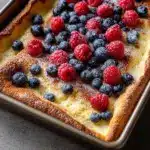
Baked German Pancake Recipe
- Total Time: 35 minutes
- Yield: 1 9×13-inch pancake 1x
- Diet: Vegetarian
Description
This Baked German Pancake is a delicious and easy-to-make breakfast or brunch dish that puffs up beautifully in the oven. With a light, custardy center and crispy edges, it’s a crowd-pleaser for any morning gathering.
Ingredients
Eggs
- 6 large eggs
Milk
- 1 cup milk
All-Purpose Flour
- 1 cup all-purpose flour
Salt
- 1 pinch of salt
Vanilla Extract
- 1 teaspoon vanilla extract
Unsalted Butter
- 5 tablespoons unsalted butter
Instructions
- Preheat Oven: Preheat the oven to 425ºF (220ºC) and melt the unsalted butter in a 9×13-inch baking pan.
- Blend Ingredients: In a blender, combine eggs, milk, flour, salt, and vanilla extract until smooth. Pour the batter into the hot baking dish over the melted butter.
- Bake Pancake: Bake for 22-27 minutes until golden brown and puffy. Serve with powdered sugar, maple syrup, or preferred toppings.
Notes
- This pancake will deflate slightly after coming out of the oven, which is normal.
- Experiment with different toppings like fresh berries, whipped cream, or lemon curd for added flavor.
- Prep Time: 10 minutes
- Cook Time: 25 minutes
- Category: Breakfast, Brunch
- Method: Baking
- Cuisine: German
Nutrition
- Serving Size: 1 slice (1/8 of pancake)
- Calories: 220
- Sugar: 5g
- Sodium: 180mg
- Fat: 13g
- Saturated Fat: 7g
- Unsaturated Fat: 5g
- Trans Fat: 0g
- Carbohydrates: 18g
- Fiber: 1g
- Protein: 7g
- Cholesterol: 190mg
Keywords: German Pancake, Baked Pancake, Breakfast, Brunch, Easy Recipe
